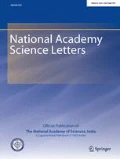Abstract
In a multi-GNSS environment, users are exploiting the benefits of hybrid multi-constellation GNSS operation for redundancy and enhanced solution quality. The Indian geolocation helps in signal availability from all global and regional systems, but no study on the usability and advantages of the Japanese Quasi-Zenith Satellite System (QZSS) is made from India. This work presents the first results on the availability and advantages of QZSS from India based on simulations and real-time data. It is observed that 2–4 QZSS satellites can always be used from India. In static Single Point Positioning (SPS), QZSS in hybrid operation provides better solution quality over any single global constellation operation and GPS + Galileo + QZSS provides around 1 m 2-dimensional solution precision. The results would be useful for Indian GNSS user community.


References
Hauschild A, Steigenberger P, Rodriguez-Solano C (2012) Signal, orbit and attitude analysis of Japan’s first QZSS satellite Michibiki. GPS Solut 16(1):127–133. https://doi.org/10.1007/s10291-011-0245-5
Santra A, Mahato S, Mandal S, Dan S, Verma P, Banerjee P, Bose A (2019) Augmentation of GNSS utility by IRNSS/NavIC constellation over the Indian region. Adv Space Res 63(9):2995–3008. https://doi.org/10.1016/j.asr.2018.04.020
Mahato S, Santra A, Dan S, Verma P, Banerjee P, Bose A (2020) Visibility anomaly of GNSS satellite and support from regional systems. Curr Sci 119(11):1774–1782
Dey S, Chakraborty I, Banerjee P, Bose A (2022) Anomalous GNSS signal strength fluctuations during the Amphan super cyclone in Eastern India on May 20, 2020. Natl Acad Sci Lett 45(1):45–49. https://doi.org/10.1007/s40009-021-01076-5
Bhatta B (2010) Global navigation satellite systems: insights into GPS, GLONASS, compass, and others. BS Publications, Galileo
Reid TG, Walter T, Enge PK, Sakai T (2016) Orbital representations for the next generation of satellite-based augmentation systems. GPS Solut 20(4):737–750. https://doi.org/10.1007/s10291-015-0485-x
List of Positioning Satellites. https://qzss.go.jp/en/technical/satellites/index.html#QZSS. Accessed 29 Mar 2022
QZSS Satellite Information. https://qzss.go.jp/en/technical/qzssinfo/index.html. Accessed 29 Mar 2022
Orbitron software. http://www.stoff.pl/. Accessed 15 Dec 2021
Two-Line Orbital Element Set File. https://ai-solutions.com/_help_Files/two-line_element_set_file.htm. Accessed 28 Mar 2022
Current as of 2022 Feb 15 14:06:21. https://celestrak.com/NORAD/elements/table.php?GROUP=gnss&FORMAT=tle. Accessed 15 Feb 2022
NEO/LEA-M8T u-blox M8 concurrent GNSS timing modules Data sheet. https://content.u-blox.com/sites/default/files/NEO-LEA-M8T-FW3_DataSheet_%28UBX-15025193%29.pdf. Accessed 15 Feb 2022
Santra A, Mahato S, Dan S, Bose A (2019) Precision of satellite based navigation position solution: a review using NavIC data. J Inf Optim Sci 40(8):1683–1691. https://doi.org/10.1080/02522667.2019.1703264
Suzuki T, Kubo N, Takasu T (2014) Evaluation of precise point positioning using MADOCA-LEX via Quasi-Zenith satellite system. In: Proceedings of the 2014 international technical meeting of the institute of navigation, San Diego, California, Jan 2014, pp 460–470
Acknowledgements
Authors acknowledge financial support from Integrated Test Range (ITR), Defence Research and Development Organization (DRDO) (Project Code: PMD/CARS/050/2020) and the developers of the freeware Orbitron.
Author information
Authors and Affiliations
Corresponding author
Additional information
Publisher's Note
Springer Nature remains neutral with regard to jurisdictional claims in published maps and institutional affiliations.
Significance Statement In multi-GNSS, users utilize hybrid operation to exploit the advantages. Based on the experience of regional navigation systems’ advantages, for the first time the usability and advantages of the regional QZSS developed by Japan is explored from India. Potentials and advantages of QZSS from India are demonstrated through the results.
Rights and permissions
About this article
Cite this article
Mahato, S., Dutta, D., Goswami, M. et al. QZSS Regional Navigation System Visibility and Solution Experience from India. Natl. Acad. Sci. Lett. 46, 61–64 (2023). https://doi.org/10.1007/s40009-022-01150-6
Received:
Revised:
Accepted:
Published:
Issue Date:
DOI: https://doi.org/10.1007/s40009-022-01150-6

